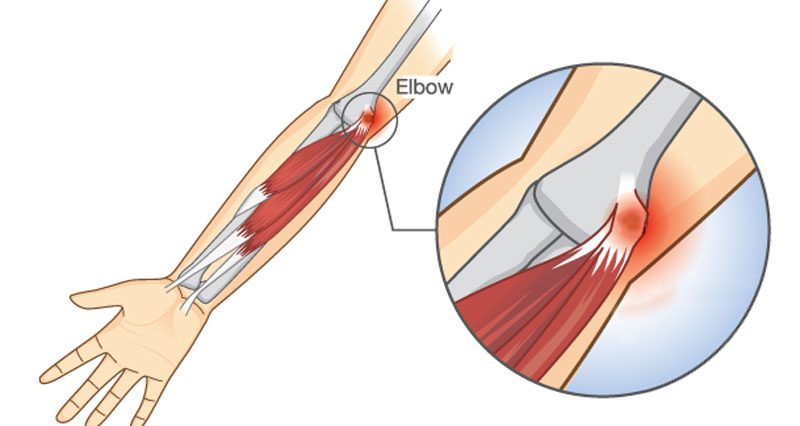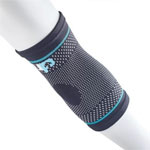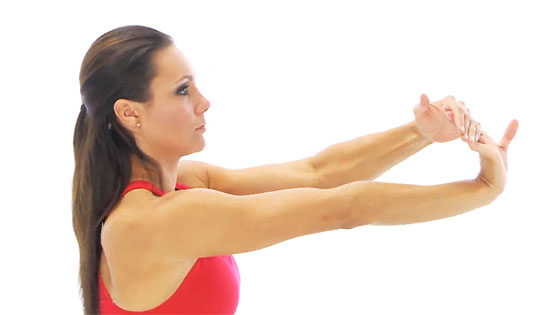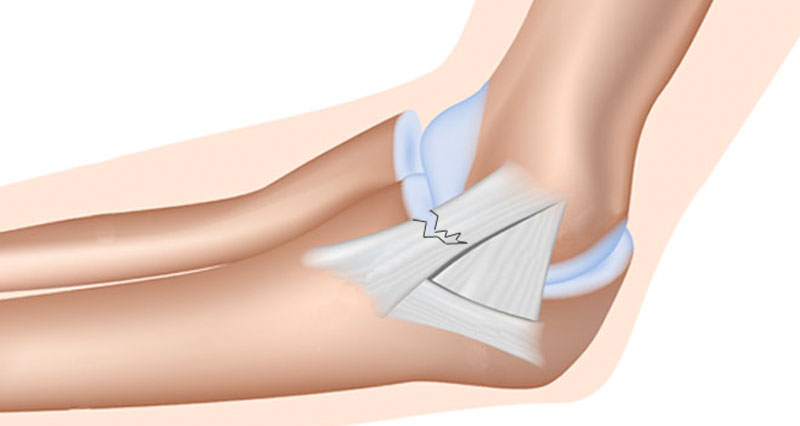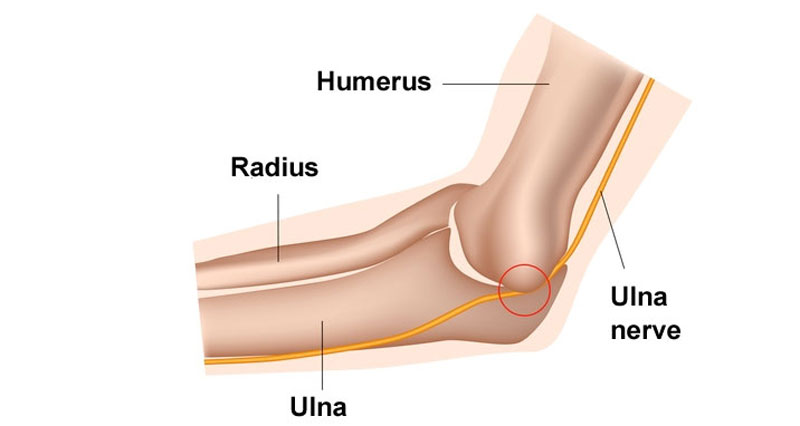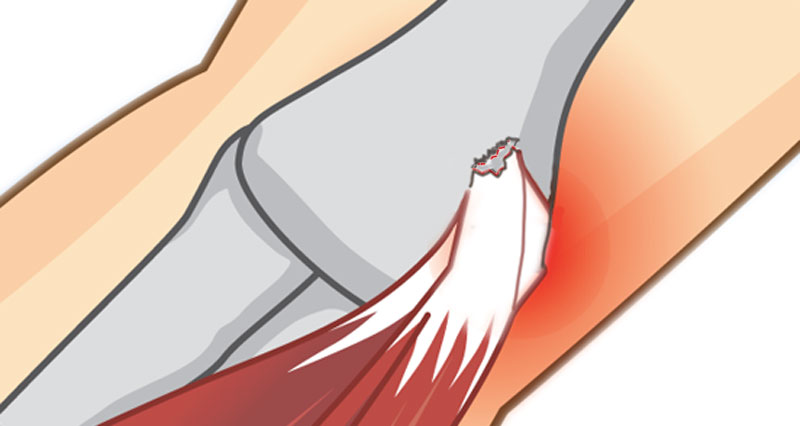Golfer’s elbow is also known as medial epicondylitis, thrower’s elbow, or little league elbow. It causes pain on the inside of the elbow, which develops gradually over time. Here we explain the symptoms, causes, and treatment of Golfer’s elbow.
Golfer’s elbow symptoms
Symptoms of Golfer’s elbow/medial epicondylitis include:
- Pain and tenderness on the inside of your elbow.
- Symptoms usually develop gradually over time and are uncomfortable niggle.
- Pain is located specifically over the medial epicondyle (a prominent bony protrusion).
- Pain is worse when attempting to grip things.
- You will have general weakness in the wrist.
Assessment & diagnosis
Assessment tests
When assessing Golfer’s elbow, your therapist will get you to flex (bend) your wrist against resistance.
This is done by turning your palm face down, and then flexing the hand downwards whilst your therapist resists the movement.
If pain is reproduced then the test is positive.
What is Golfer’s elbow?
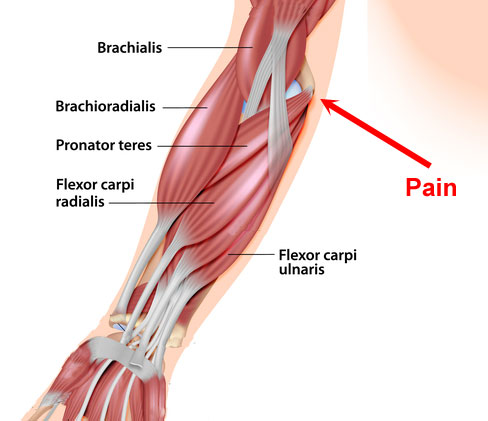
Golfer’s elbow (medial epicondylitis) is inflammation or degeneration of the wrist flexor muscles at the point they insert onto the inside of the elbow.
Strictly speaking, most cases are degeneration from wear and tear, rather than acute inflammation, especially with long-term injuries. ‘Itis’ means inflammation.
Studies have shown that acute inflammatory cells are not present in long-term chronic cases. Therefore, degeneration of the tendon may be a more accurate way of describing what is happening rather than acute inflammation.
Anatomy
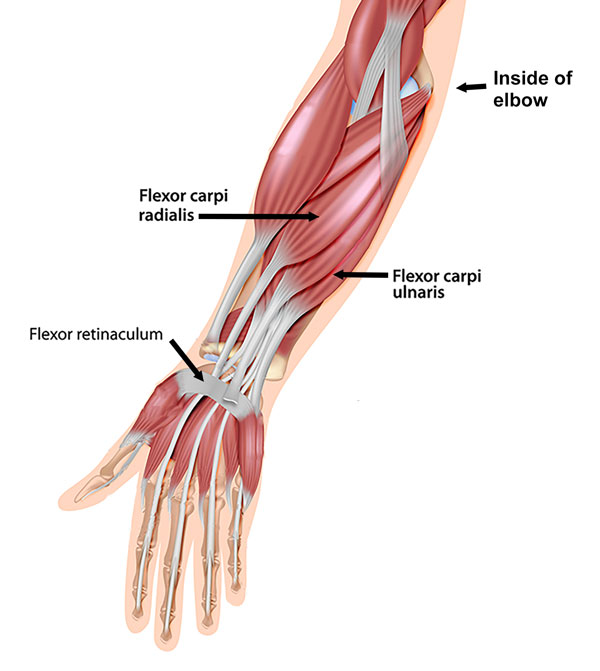
The muscles of the wrist flexors and pronator muscle insert at the medial epicondyle on the inside of the elbow.
They are involved in bending the palm downwards and rotating the forearm inwards. They are also important for gripping things.
What causes Golfer’s elbow?
The underlying cause of golfer’s elbow is usually overuse. This causes tendons (joins muscle to bone) to become painful and inflamed.
Over time the acute inflammation results in degeneration, wear and tear. In particular, repeated wrist flexion (bending the wrist), such as holding a golf club stresses the wrist flexor muscles. Hence the term ‘Golfer’s elbow’.
- Tennis players who have a powerful forehand, with lots of topspin are also at increased risk.
- Throwing a Javelin with a poor, low elbow technique puts a huge strain on the inside of the elbow.
- Likewise, Baseball pitchers are also at risk.
However, most causes of medial epicondylitis may not be sport-related but caused by repetitive strain at work.
People who use keyboards, or do manual labour such as carpentry/DIY – where grip strength is important, are very likely to develop overuse injuries.
It is important to recognize any early warning signs and rest the elbow before the injury develops into something more chronic and difficult to treat.
Treatment for Golfer’s elbow
There is unlikely to be one single cure for Golfer’s elbow. People will respond differently to various types of treatment, so it is important to apply as many different approaches as possible.
Rest
Rest from activities that cause pain. If you continue to use your wrist then your injury could become chronic. Therefore it will be much more difficult to treat.
This may mean simply adapting your training to avoid overstressing the elbow. Or for more serious injuries, a period of complete rest might be required. In particular, avoid gripping anything tightly or opening heavy doors.
Ice/cold therapy
Apply a cold therapy and compression wrap for 10 to 15 minutes every hour. After the first few hours, this can be reduced to 3 to 4 times a day as required.
Later in the rehabilitation program or if the injury becomes chronic applying heat may be more beneficial.
Elbow brace/support
Wear a brace or elbow support. This will provide protection and help prevent further injury.
A Tennis or Golfer’s elbow-type brace is worn around the forearm just below the elbow and changes the
angle that the forces transmitted through the tendon, hence taking some of the strain off the injured part.
Heat
After the initial acute phase (which may take anywhere from 2 days and 2 weeks), apply heat and wear a heat retainer or elbow support.
At this stage, where there is no acute inflammation, heat may be more beneficial than ice. Heat will help stimulate blood flow which aids healing.
Medication
A doctor may prescribe NSAIDs (Non-Steroidal Anti-inflammatory Drugs) such as Ibuprofen, which can help reduce pain and inflammation, especially in the early stages.
It is thought they are less helpful later in the rehabilitation process though.
Always check with a doctor before taking medication. You should not take Ibuprofen if you have asthma.
Electrotherapy
A physiotherapist or similar may use electrotherapy, such as ultrasound or laser treatment to help reduce pain and inflammation.
Massage
Sports massage can help with Golfer’s elbow rehabilitation, but only after the acute stage, and for stubborn injuries that fail to heal. Cross-friction massage applied to the tendon can help stimulate healing.
Also, massage to the muscles of the forearm can help reduce tension and improve their function. Long-term, this should help reduce the strain on your tendon at the elbow. Apply cold therapy after a massage treatment.
Injections
A steroid injection may be considered if more conservative treatment is not effective. It may heal quickly within two weeks. But you could suffer from Golfer’s elbow for months, particularly if it is not allowed to rest in the early days.
Platelet-rich plasma injections
Patients may also be treated with platelet-rich plasma injections. Blood is taken from the patient themselves and using a centrifuge, the clotting and healing factors of the patient’s blood are isolated. These can then be injected into the site of the injury where the tendon has frayed.
It is important throughout the rehabilitation process to maintain fitness in ways that do not stress the elbow, for example, running or strength training so long as it is not painful.
Exercises
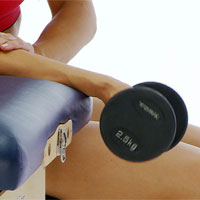
Stretching is an important part of the rehabilitation process and should begin as soon as pain allows and be continued throughout the rehabilitation program and beyond.
As it is an overuse injury, overdoing the strengthening exercises too soon could slow or prevent the healing process.
Your aim should be to gradually increase the load through the tendon within the limits of pain.
- Read more on Golfer’s elbow exercises.
Golfer’s elbow surgery
The surgical treatment of golfer’s elbow consists of recessing and releasing the portion of the injured tendon.
The frayed part of the tendon is removed (released) from the bone. There are more modern techniques used to perform the operation using endoscopic or arthroscopic techniques.
This involves a small incision and from inside your elbow, the surgeon will identify structures and cut them.
References
- Ciccotti MC, Schwartz MA, Ciccotti MG. Diagnosis and treatment of medial epicondylitis of the elbow. Clin Sports Med 2004;23(4):693–705.
